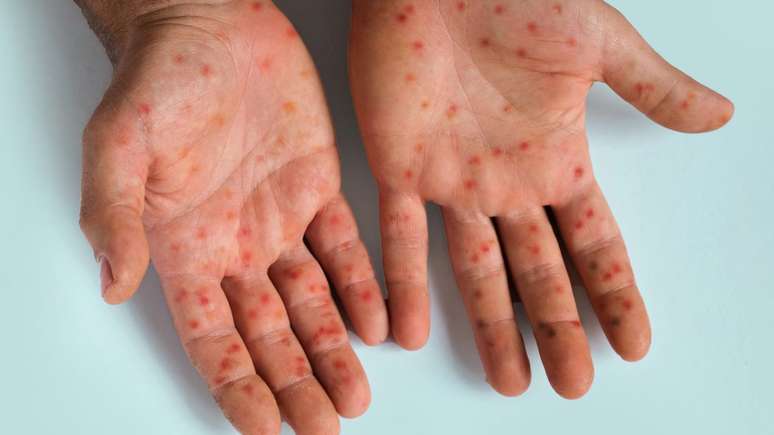The smallpox epidemic in Africa has health authorities around the world concerned; see the causes of the disease and how to avoid contamination
A burst of mbox in the Democratic Republic of Congo and other parts of Africa has concerned health authorities around the world. Last Wednesday (14), the World Health Organization (WHO) declared the disease a global health emergency.
Mpox (formerly called monkeypox) is a disease caused by a virus that belongs to the genus Orthopoxvirus, of the family Poxviridaewhich resembles smallpox, which was eradicated in 1980. The infection causes a rash that usually develops on the face and then spreads to other parts of the body.
What are the symptoms?
According to the World Health Organization (WHO), the main symptoms of monkeypox are:
- Fever;
- Heachache;
- Muscle and back pain;
- Swollen lymph nodes;
- Chills;
- Exhaustion;
- Skin lesions.
Skin lesions are the main feature of the disease. They are similar to spots caused by other conditions, such as chickenpox or syphilis. The lesions can appear on virtually any area of the body, causing itching and pain.
Transmission
Transmission between humans occurs mainly through contact with skin lesions of infected people and/or contact with droplets expelled by someone infected.
Although there is no specific treatment for the infection, outbreaks can be controlled with drugs. In addition, the smallpox vaccine is also effective against smallpox.
How to prevent?
Like most infectious diseases, monkeypox can be prevented with some simple hygiene measures, such as:
- Wash your hands with soap and water or alcohol gel to avoid exposure to the virus;
- Avoid contact with infected people;
- Keep away from sick animals (alive or dead) that could host the virus, such as rodents, marsupials and primates;
- Use masks and other personal protective equipment;
- Avoid using objects belonging to infected people.
The incubation period of the virus that causes the disease can range from five to 21 days. Therefore, the recommendation is that infected people remain isolated and under observation during this period. The disease is usually self-limiting, with most people recovering on their own after a few weeks.
Source: Health in the day
Source: Terra
Ben Stock is a lifestyle journalist and author at Gossipify. He writes about topics such as health, wellness, travel, food and home decor. He provides practical advice and inspiration to improve well-being, keeps readers up to date with latest lifestyle news and trends, known for his engaging writing style, in-depth analysis and unique perspectives.








